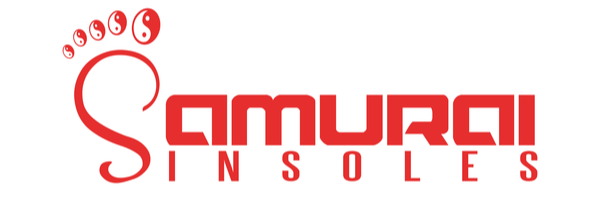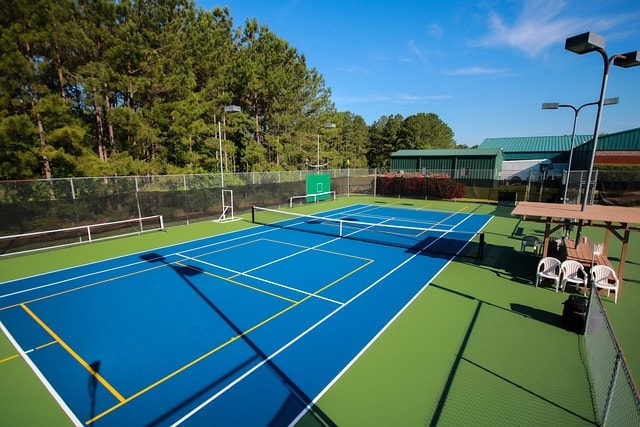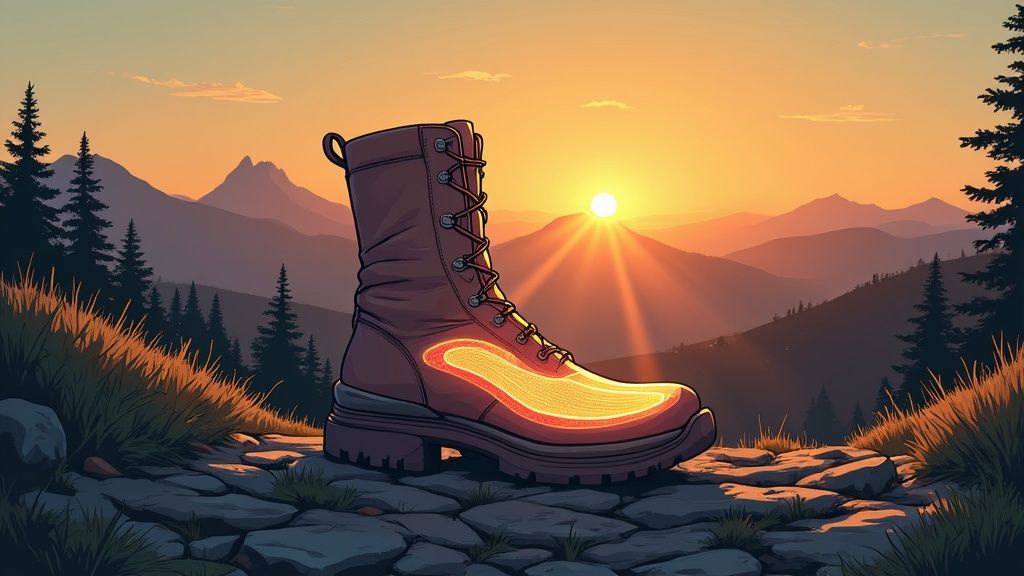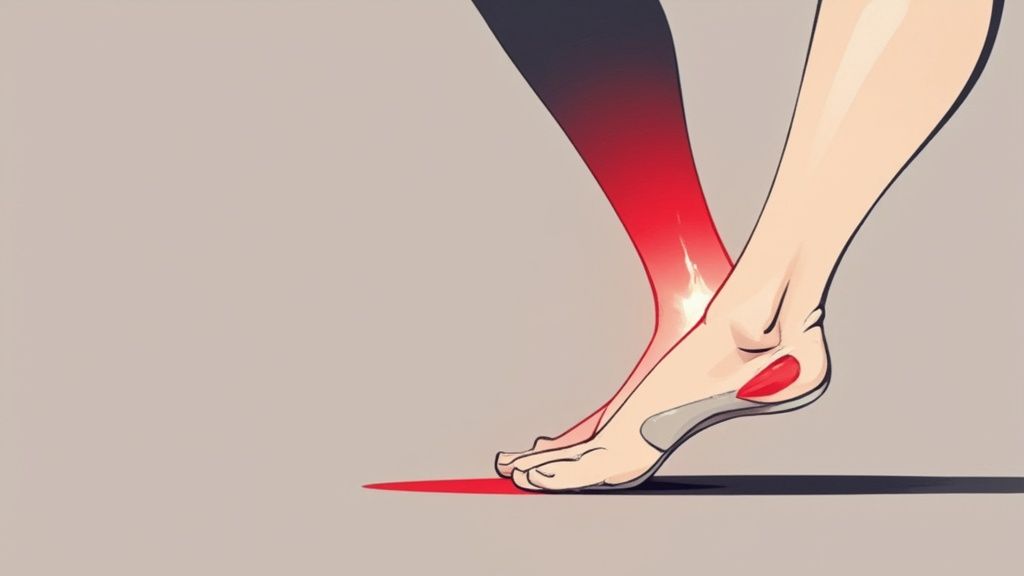Understanding What Your Feet Are Actually Doing
Let's move beyond the basic diagrams of foot mechanics and really grasp what overpronation and supination mean for you. Drawing on insights from podiatrists and biomechanics experts, we'll explore how these conditions play out in your daily life. Think about why your feet might feel great in the morning but ache by evening, how different walking surfaces affect them, and the subtle signs you might miss until a real problem develops.
We'll also uncover the connection between how your foot lands and seemingly unrelated issues like hip or lower back pain. Armed with this knowledge, you can cut through the noise of conflicting advice and figure out which interventions truly address your individual needs.
Overpronation involves an excessive inward roll of the foot after striking the ground, while supination means the foot rolls outward. This seemingly small difference in mechanics has a ripple effect on how forces are distributed throughout the foot, ankle, and even up the leg. Someone overpronating might experience increased stress on their inner arch and knee, while someone supinating might feel strain on their outer ankle and hip.
The image above illustrates the pronation spectrum, from a neutral foot strike to significant overpronation. Notice how the ankle and foot align differently depending on the degree of pronation. This visual helps explain why overpronation can contribute to specific problems like plantar fasciitis or bunions due to the shift in weight distribution.
Understanding these distinct effects of overpronation and supination is crucial. It explains why generic footwear and orthotics can be ineffective or even harmful. Choosing the right interventions starts with understanding your specific foot mechanics – not just the static structure of your foot, but how it moves dynamically as you walk and run.
Consider, too, how your daily activities and overall lifestyle influence your foot mechanics. Do you stand for long periods on hard surfaces? Do you favor high-impact exercise? These factors contribute to cumulative stress on your feet and can worsen existing overpronation or supination tendencies. Long-term relief and prevention depend on addressing these lifestyle factors alongside any targeted treatments. Recognizing these real-world implications is the first step towards effectively managing these conditions and underscores the need for a personalized approach. This approach should take into account your unique biomechanics, lifestyle, and the specific symptoms you experience.
The Reality Behind Overpronation (It's Not About Flat Feet)
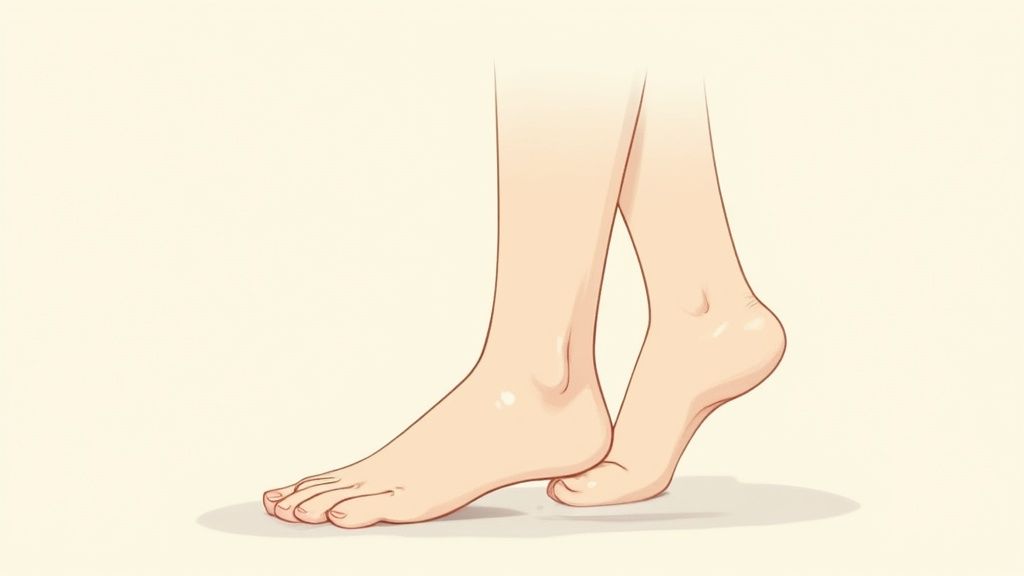
The connection between flat feet and overpronation is often misunderstood. While a flat foot structure can indeed contribute, it’s not the defining factor. Many with normal or even high arches also overpronate. This is because overpronation is fundamentally about how your foot moves, not simply its static shape.
Overpronation describes excessive inward rolling of the foot during motion. So, even a normal-looking arch can collapse inward when walking or running. Factors like muscle imbalances – weakness or tightness in the lower leg and foot – and limited ankle mobility can cause overpronation irrespective of arch height.
Our modern lifestyles also contribute to the problem. Think about the prevalence of desk jobs and the unforgiving, flat surfaces we navigate daily. These environments provide little stimulation for the intrinsic foot muscles, weakening them and setting the stage for overpronation. Even popular exercises, like running on paved roads without adequate support, can worsen the issue.
Overpronation: A Statistical Overview
A study of 159 participants sheds light on the prevalence of overpronation. The findings revealed that 43% had pronated feet and 14% had highly pronated feet. This is considerably more frequent than supination, which affected 16% of participants. Intriguingly, the study also found a link between pronated foot posture and weight, with 15 out of 22 individuals with highly pronated feet being classified as overweight based on their BMI scores. You can explore the full study here.
This research demonstrates the interplay between biomechanics and overall health. Addressing overpronation effectively often necessitates a comprehensive approach that goes beyond simple arch supports. Lifestyle factors, muscle strength, and movement patterns all play a role.
Recognizing the Early Signs of Overpronation
It's important to recognize early warning signs often mistaken for age-related aches or general foot fatigue. These can include recurring pain in the arches, heels, ankles, knees, and even hips, along with feelings of instability in the feet. Recognizing these subtle indicators as potential symptoms of overpronation is vital for early intervention and preventing more serious problems. The key isn't just finding “supportive” shoes, it's addressing the root biomechanical dysfunction.
To further illustrate the factors contributing to overpronation, let's examine the following table:
Overpronation Risk Factors and Demographics
| Population Group | Pronation Rate | Primary Risk Factors | Common Complications |
|---|---|---|---|
| Runners | Higher than average | Repetitive impact, improper footwear, muscle imbalances | Shin splints, plantar fasciitis, knee pain |
| Individuals with flat feet | Increased likelihood | Inherent structural instability | Arch pain, bunions, heel spurs |
| Overweight individuals | Positive correlation observed | Added stress on foot structures | Increased severity of overpronation symptoms |
| Sedentary individuals | Elevated risk | Weak foot muscles, lack of mobility | Foot fatigue, instability |
| Older adults | Prevalence may increase with age | Loss of muscle mass and flexibility, joint degeneration | Balance issues, increased fall risk |
This table highlights the diverse range of factors that can influence overpronation, emphasizing the need for a personalized approach to assessment and treatment.
By understanding these factors, individuals can take proactive steps to mitigate their risk and improve their overall foot health.
Why Supination Creates Different Problems Entirely
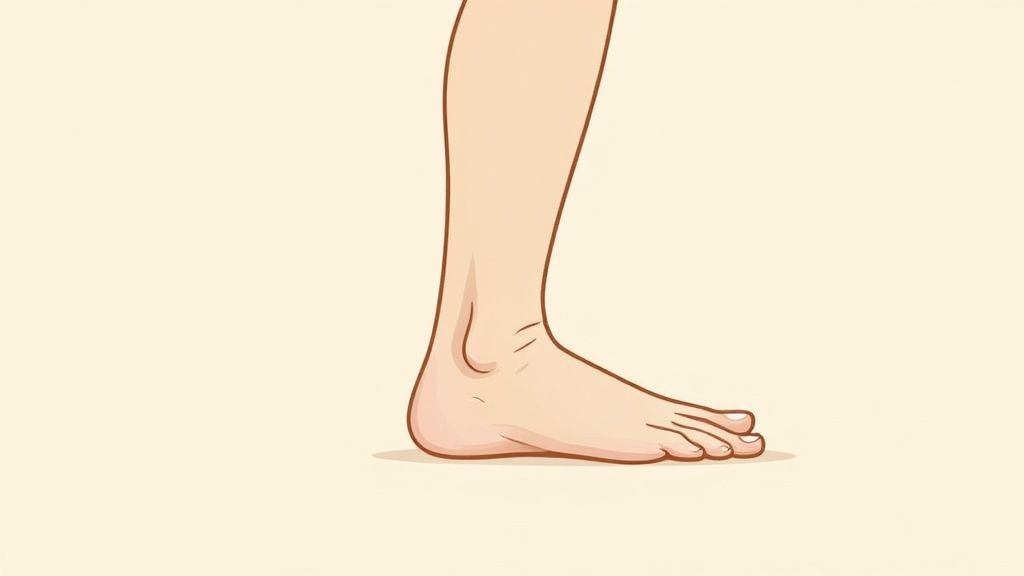
While overpronation often dominates the discussion, supination, also known as underpronation, presents a unique set of biomechanical challenges. Supination is characterized by the outward rolling of the foot, effectively creating a rigid lever that poorly absorbs shock. This starkly contrasts with overpronation, where the foot collapses excessively inward. This fundamental difference in mechanics explains why generic "supportive" footwear advice often proves counterproductive for supinators.
Foot posture distribution, encompassing supination and pronation, significantly influences foot health and athletic performance. Approximately 10% of the population supinates, while the majority exhibit a neutral gait or a degree of pronation. Supination often predisposes individuals to ankle sprains and stress fractures, while overpronation is frequently linked to conditions like medial tibial stress syndrome. Learn more about the distinctions between supination and pronation here.
Supination: The Rigid Lever Problem
Consider the difference between a stiff spring and a flexible one. The stiff spring absorbs less impact, transferring more force upward. This analogy illustrates why supinators commonly experience sharp, localized pain in the foot, ankle, and lower leg – the areas subjected to this increased force. This contrasts with the more diffuse discomfort often associated with overpronation.
For instance, a supinator running on concrete might develop intense ankle pain or even a stress fracture in the outer foot bones. This occurs because the rigid foot structure fails to effectively dissipate impact forces. Ironically, this same runner might find little relief from heavily cushioned shoes, which can actually increase instability by reducing ground contact and control.
Identifying the Subtle Signs of Supination
Supination often manifests with symptoms that can be easily misdiagnosed or dismissed. Unlike overpronation, where discomfort might decrease with activity as the foot "warms up," supination pain often intensifies with movement. The already rigid foot structure isn't designed to handle prolonged, repetitive stress.
Look for calluses or thickened skin on the outer edge of the foot—a clear indicator of excessive pressure in that area. Recurrent ankle sprains, particularly when landing on uneven terrain, can also suggest supination. The outward rolling motion compromises ankle stability, making these injuries more likely.
Why Cookie-Cutter Approaches Fail Supinators
Standard orthotics that primarily focus on arch support can worsen supination problems. Adding support to an already rigid structure further restricts mobility and hinders shock absorption. Supinators benefit from interventions that enhance flexibility and mobility. This includes targeted stretches, strengthening exercises, and orthotics designed to cushion and guide the foot, rather than restricting it. A personalized approach that considers individual biomechanics is paramount for effectively managing supination.
Reading Your Body's Warning Signs Correctly
Your feet are constantly talking to you, offering clues about their well-being. The key is learning to interpret these messages. This section helps decode the distinct symptom patterns that differentiate overpronation from supination, emphasizing why the location, timing, and type of discomfort are more informative than the pain's intensity.
Consider morning stiffness that eases with movement: a classic sign of overpronation. This arises from overnight tightening of stretched and strained tissues, especially the plantar fascia. Movement gradually loosens these tissues, relieving the initial stiffness. However, persistent overpronation can lead to recurring discomfort as the day progresses and the foot bears more weight.
Supination, conversely, often manifests as sharp pain that intensifies with activity. The rigid foot structure struggles to absorb shock, so repeated impact strains the outer foot and ankle. Consequently, supinators might feel comfortable at rest but experience escalating pain during exercise or prolonged standing.
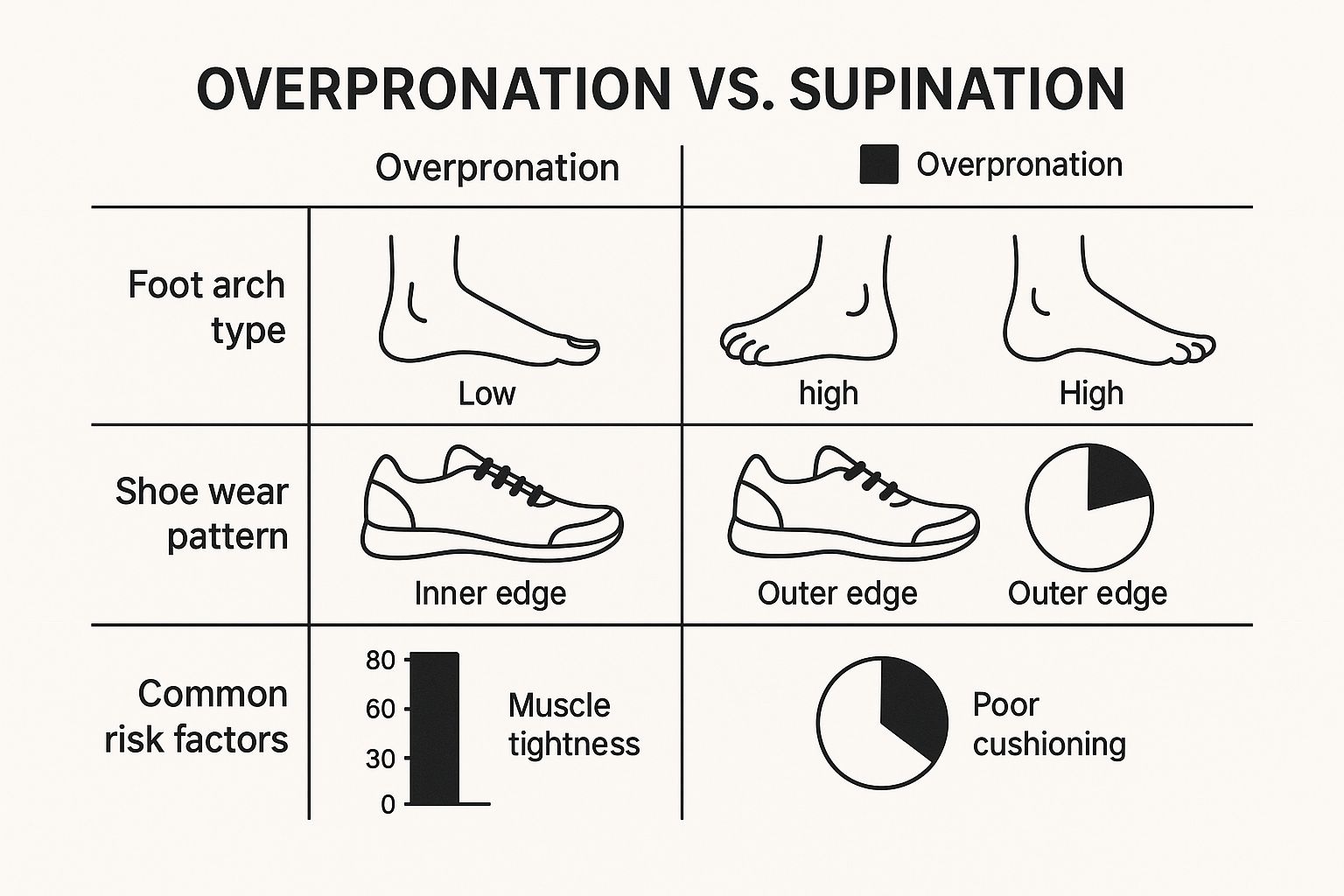
The infographic above provides a visual comparison of overpronation and supination, highlighting differences in arch type, shoe wear patterns, and common risk factors. Note how the low arch of overpronation correlates with wear on the inner shoe edge, while the high arch of supination leads to outer edge wear. Recognizing these biomechanical patterns is critical for choosing appropriate footwear and support.
Monitoring Your Progress
Tracking subtle shifts in your comfort levels is vital for assessing the effectiveness of any intervention. Improvement isn't always a straight line. Some individuals experience immediate relief with a simple change like switching to Samurai Insoles. The Ninjas model, designed for subtle overpronation correction, fits discreetly under existing insoles, whereas the Shoguns offer advanced pronation control with an integrated heel counter.
Others with more complex biomechanical issues may need a broader, multi-faceted approach. Symptoms that worsen despite initial interventions warrant further evaluation and a more personalized strategy. This could involve targeted exercises, manual therapy, or even custom orthotics.
To better understand the nuances of these conditions, let's examine a clinical breakdown of typical symptom patterns:
Distinctive Symptom Patterns by Condition Clinical comparison of pain patterns, timing, and progression between overpronation and supination
| Symptom Type | Overpronation Pattern | Supination Pattern | Progression Timeline |
|---|---|---|---|
| Pain Location | Arch, heel, inner ankle, knee | Outer foot, ankle, shin | Overpronation: Can spread up the leg; Supination: Remains localized |
| Pain Timing | Morning stiffness, pain after activity | Pain during activity, worsening with impact | Overpronation: Gradual onset; Supination: Often sudden |
| Pain Quality | Dull, aching, radiating | Sharp, stabbing, localized | Overpronation: Can become sharp with prolonged strain; Supination: Remains sharp |
This table helps differentiate the experience of overpronation versus supination. As you can see, overpronation pain often starts gradually and can radiate, while supination pain is typically sharp and localized.
Making Informed Decisions
Recognizing whether your symptoms indicate progression or response to treatment empowers you to make informed choices. It helps determine if a simple solution like Samurai Insoles will suffice or if you need a more comprehensive, professionally guided approach. The key is to listen to your body and understand the nuances of your discomfort to find effective, long-term relief.
Getting Professional Assessment That Actually Helps
Finding the right foot evaluation can be tricky. A quick "wet test" or a brief arch examination simply won't cut it when diagnosing complex biomechanical issues like overpronation versus supination. These conditions demand a more in-depth approach. This section explores what a truly comprehensive gait analysis involves and how to find a healthcare professional who can provide you with genuinely helpful insights.
Comprehensive Gait Analysis: Beyond the Basics
A thorough assessment delves deeper than just observing your static foot posture. It should incorporate a dynamic analysis, observing your foot and leg movements as you walk and run. While visual observation remains valuable, integrating advanced diagnostic tools provides a more complete picture. Pressure mapping, for example, precisely measures pressure distribution across your foot, pinpointing areas of excessive load. Slow-motion video analysis offers a detailed breakdown of your gait cycle, uncovering subtle biomechanical deviations that might otherwise be missed.
Choosing the right healthcare provider is paramount. A general practitioner can offer initial guidance, but a podiatrist, sports medicine physician, or a physical therapist specializing in biomechanics possesses the specialized knowledge to interpret complex foot mechanics and create tailored treatment plans. A podiatrist, for example, can identify structural abnormalities and prescribe custom orthotics, while a physical therapist can focus on correcting muscle imbalances and movement dysfunction through targeted exercises.
Timing and Preparation: Key to Accurate Results
When you schedule your assessment matters. Symptoms of overpronation or supination are often more noticeable after periods of activity. Consider booking your evaluation for later in the day, perhaps after work or a workout, to give your provider a clearer understanding of how your feet perform under stress. Factors like the time of day, your recent activity level, and even the shoes you wear to the appointment can all influence the results. Wearing your everyday athletic shoes can help provide a more accurate assessment of your foot mechanics during exercise. Interestingly, the frequency of foot pronation varies across age groups. One study in Surat City indicated that 8.1% of individuals aged 21-30 presented with pronated feet, while 83.8% demonstrated normal alignment. This differs from another study that found 35% with pronated feet and 65% with excessively pronated feet. For a deeper dive into these findings, you can explore the research here.
Asking the Right Questions, Interpreting the Results
Don't hesitate to be an active participant in your assessment. Ask your provider about the specific biomechanical issues they observe and how these contribute to your symptoms. Understanding the reasoning behind your diagnosis helps you make informed decisions about your treatment. The results should directly guide the treatment plan, rather than simply labeling your condition as "overpronation" or "supination." A skilled provider will explain how your unique biomechanics inform the recommended approach. This could involve specific exercises, orthotics like Samurai Insoles, or even lifestyle adjustments. This personalized strategy is the key to more effective, long-term solutions.
Treatment Approaches That Address Root Causes
Effective treatment for foot mechanics hinges on a key principle: overpronation and supination demand different solutions. Using the wrong approach is like trying to tighten a loose screw with a hammer. An orthotic designed for overpronation can actually worsen supination symptoms. Let's explore evidence-based interventions, informed by the experience of practitioners who’ve addressed these conditions in thousands of patients.
Orthotics: Support vs. Cushioning
With overpronation, the primary goal is managing excessive inward roll. Orthotics like the Samurai Insoles Shoguns, featuring an integrated heel counter and arch support, offer this crucial stability. The Shoguns actively realign the foot and ankle, reducing strain on the medial structures.
For more subtle overpronation, the Samurai Insoles Ninjas present a different approach. These slim insoles fit discreetly under existing insoles, offering a gentle corrective force without drastically changing shoe fit. This nuanced approach caters to varying degrees of overpronation.
Supination, however, requires a contrasting strategy. Adding rigid support to an already stiff foot often exacerbates the problem. The focus, instead, is cushioning and shock absorption. Insoles like the Samurai Insoles Sumos, with their added foam layer, provide this essential impact protection. The goal isn't to restrict movement, but to lessen the force transmitted through the foot.
Exercises and Manual Therapy: Restoring Balance
Targeted exercises are key for addressing the muscle imbalances at the root of both overpronation and supination. Overpronation often benefits from strengthening the arch-supporting muscles, like the tibialis posterior. Exercises such as calf raises and toe curls build strength and enhance stability.
Supination, conversely, benefits from exercises that improve flexibility and range of motion in the foot and ankle. Stretching the calf muscles and plantar fascia can reduce stiffness and improve shock absorption.
Manual therapy, from a qualified physical therapist or chiropractor, can further address muscle tightness and joint restrictions. Techniques like soft tissue mobilization and joint manipulation improve mobility and reduce pain, complementing targeted exercises for a more comprehensive approach to restoring balance.
Footwear: Beyond Simple Support
Footwear choices play a crucial role. Overpronators benefit from shoes with motion control features, limiting excessive inward roll and maintaining proper alignment. Supinators require shoes with ample cushioning and flexibility, allowing natural foot movement.
Choosing shoes based on specific biomechanical needs—not generic "support"—is paramount. A highly cushioned shoe, for example, might initially feel good for a supinator, yet worsen instability during activity by reducing ground feel.
Activity Modification: Listening to Your Body
Modifying activity levels is crucial for both conditions. Pushing through pain hinders healing and exacerbates symptoms. Gradually increasing activity while heeding your body’s signals is key. This includes recognizing aggravating activities and finding alternatives. A supinator might switch from running on concrete to cycling or swimming to reduce impact stress.
Realistic Timelines and Adjustments
Improvement takes time and varies based on the individual and interventions. Some experience immediate relief with a simple change like using Samurai Insoles. Others need weeks or months of consistent effort. Understanding realistic timelines and adjusting your strategy is vital. If a treatment isn’t effective within a reasonable timeframe, re-evaluate with your healthcare provider to explore adjustments or alternative therapies.
Making Smart Footwear and Support Decisions
The right footwear and orthotics can dramatically improve foot comfort and overall well-being. However, their effectiveness depends entirely on how well they align with your individual foot mechanics. This section clarifies the often-confusing world of motion control versus cushioning, helping you determine which shoe features genuinely benefit your specific foot type—overpronation or supination—and which are simply marketing hype.
Beyond Generic Arch Supports: Choosing Effective Orthotics
Many people mistakenly assume all orthotics are the same, grabbing generic arch supports without considering their specific needs. Just as overpronation and supination require different approaches, so too do orthotic solutions. For overpronators, the goal is to control the excessive inward rolling of the foot. This requires orthotics with firm arch support and often a heel cup to stabilize the rearfoot. The Samurai Insoles Shoguns offer this targeted support, incorporating a heel counter to actively realign the foot and ankle, reducing strain.
Supinators, conversely, need a different tack. Adding more support to an already rigid foot can worsen the problem. The focus should be on cushioning and shock absorption. Orthotics like the Samurai Insoles Sumos, with their added foam layer, prioritize impact protection, minimizing force transmitted through the outer foot and ankle. They cushion impact without adding unnecessary rigidity, promoting natural foot movement. This underscores the importance of understanding your specific needs when choosing orthotics. The most expensive isn't necessarily the best; the key is finding the right type of support.
Evaluating Footwear: Matching Features to Your Needs
Similar principles apply to footwear. Overpronators benefit from shoes with motion control features, typically firmer midsoles and supportive structures that limit excessive inward roll. Look for shoes emphasizing stability and guidance. Supinators, however, require shoes with ample cushioning and flexibility to allow natural foot movement without exacerbating rigidity. Neutral shoes with softer midsoles often provide impact protection while enabling the foot to flex and adapt to varied terrain.
For those seeking a less dramatic correction for overpronation while keeping their current footwear, the Samurai Insoles Ninjas offer a compelling solution. These low-profile insoles fit discreetly under existing insoles, providing gentle correction without significantly altering shoe fit. You get targeted support without investing in new shoes.
Activity Level and Lifestyle Considerations
Your daily activities and lifestyle further influence your footwear choices. Someone primarily walking on hard surfaces has different needs than a trail runner. Consider the type of activity, the frequency, and the surface you typically encounter. Someone spending hours on their feet might appreciate the all-day support of the Samurai Insoles Originals, offering full-length orthotic support designed for extended wear.
Informed Decisions, Lasting Comfort
Smart choices about footwear and orthotics involve understanding your biomechanics, activity level, and the features addressing your specific needs. It’s about matching solutions to your unique challenges, not just buying the priciest or trendiest product. This informed, practical approach can save you money, prevent discomfort, and contribute to lasting foot health and comfort. Ready to experience the Samurai Insoles difference? Explore our range of targeted insoles and find the perfect fit for your feet at Samurai Insoles.
